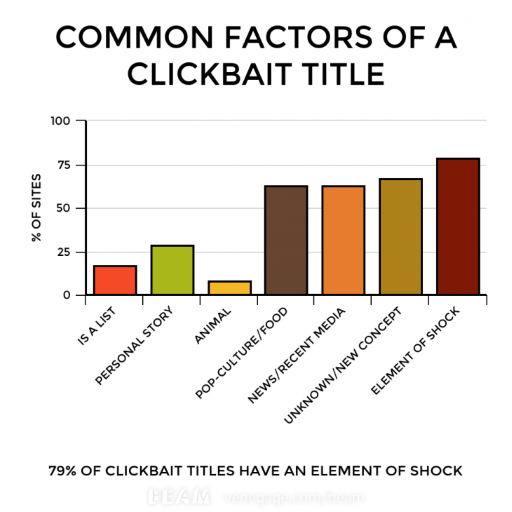
Unlocking the power of emotion in your writing
There’s a science behind the magic of words.
Here’s a question: when’s the last time you paid attention to how a piece of writing made you feel?
Maybe a self-help book left you feeling inspired and ready to take on the world! Or perhaps an article about employee burnout hit you hard enough for you to comment “Truth. That’s me.” at the end. What about that letter or email from a dear friend with inside jokes that made you smile?
The power of writing lies in its ability to evoke emotion. On their own, words are just a combination of letters. But in the hands of a wordsmith, they become magic. They paint wonderful pictures, awaken long-buried memories, open new avenues of knowledge and even move people to action. There’s a reason that they say “the pen is mightier than the sword”.
An emotionally resonant article builds a connection with a reader and leaves a deep impact. People might not remember the exact words, but they remember how it made them feel — and being memorable is gold in a time of short memories and shorter attention spans.
Understanding the critical link between writing and emotion is one thing; trying to create it is another. There’s no ‘how to’ bible, but my personal theory is that wielding emotion effectively in writing consists of one part technique, one part awareness and one part empathy.
Technique: get the basics right
Like any skill, having a good foundation is key. How can you change the world with your words if you don’t know an adjective from a verb? Or why no, ‘should of’ is not equivalent to ‘should have’? (Seriously, please stop.) This isn’t just me being a ‘grammar nazi’, either.
A certain standard of readability is required and expected by readers to sink into a flow state, which allows them to focus on the main message. Too many mistakes in grammar, punctuation and other writing peripherals disrupts the natural cadence; this compromises the reading experience and creates a negative emotional association.
For instance, here’s a fictional excerpt about the rise of e-commerce in Asia.
“Studies have shown that 75 percet of Asians have, begun making, e-commerce purchases for the first time because the pandemic has driven them to adopt technology at unprecedented rates compared to previously where they preferred to make in-person purchases at brick-and-mortar shops due to the fact that they can see and touch the merchandise and decide whether or not to buy-”
My bet is that your attention wandered off somewhere around the fourth line. That’s because your brain can only understand so much in one go.
Research shows that readers understand 90 percent of a sentence when it’s about 14 words long. (This one is 16.) At 43 words, comprehension is less than 10 percent. The long paragraph in the quote above was 61.
Now go back and reread the paragraph, slower this time. Did you feel your eyes first skip over the misspelled ‘percet’, then come back to the word and refocus on it for just a second longer? And did you notice that happening again at the odd commas around ‘begun making’?
Every time your mind registered these errors, you were jolted out of the flow of reading and had to start over. This process only takes a few milliseconds, which is usually insignificant— unless it’s happened, say, thrice in one paragraph. Then it might start to annoy you.
As you encounter more errors, your patience dwindles and the frustration grows till you finish reading or give up. By now, most readers would have snorted in disgust, muttered something uncomplimentary about lousy writers and clicked on to the next article.
Game over. You’ve lost your audience. So yes — do sweat the small stuff.
Awareness: write what you feel
All writers are also readers. At a basic level, we know that certain words can trigger emotions and drive reactions.
That’s the entire premise of clickbait — titles like “You Won’t Believe How This Guy Made $150,000 In Two Days” lean on emotion to compel people to click, even if they know it won’t be anything worth reading (yes, me included).

As you can see, shock is highest in this chart. Shock (“What? How is that possible?”) leads to curiosity (“But how did he do it?”), which in turn drives clicks (“I must find out!”). Emotion works. But clickbait titles are the writing equivalent of cheap jump scares. Don’t do them. Nobody likes them.
Instead, take it a step further and create deep resonance — the kind where people say “I cried while reading this” or “I felt everything about this”. To do that, you need nuance. And nuance is only achieved with two things: self-awareness and a wide vocabulary.
Self-awareness
Think back to that little exercise we did earlier with the e-commerce excerpt. How did you feel while reading it? Now go and read something else, but pay active attention to what you’re feeling while you’re reading.
What sentences struck a deep chord? Was the pacing of the writing engaging? Maybe you were drawn to a witty or memorable turn of phrase, or maybe you appreciated how succinctly the writer made their point. Perhaps a slow buildup created suspense, and the twist at the end caught you by surprise.
It’s easy to notice if something makes you laugh or frown, but the less intense emotions like boredom, impatience and confusion are also important because they indicate ineffective writing. Remember how you feel and what styles of writing inspired these feelings. They’ll help when it’s your turn to write.
In the hands of a wordsmith, words become magic. They paint wonderful pictures, evoke long-buried memories, open new avenues of knowledge and even move people to action.
Our own emotions can also affect our writing. For instance, angry writing may result in more forceful, combative words and phrases. Happiness could see more unconscious use of exclamation marks and superlatives because everything is awesome! (Cue Lego Movie soundtrack.) Anxiety or distraction, meanwhile, might lead to disjointed ideas and an illogical flow through a lack of focus.
This can be useful, but we need to be conscious of how emotions affect us to harness that force instead of letting them control us. Sometimes, if you aren’t in the right headspace to write, stepping away for a while is for the best.
Once you can identify and recognise emotion in writing (both in your work and others), you can use yourself as the benchmark for an average reader. Apply the styles you’ve learned that work for you and avoid those that don’t. Try to reread your drafts as objectively as you can when editing to avoid bias. I like to sleep on a draft for a day and come back to it with fresh eyes.
Vocabulary
One of the most common comments that writers can get is “It just doesn’t sound right.” This is an example of how people react emotionally to articles that just don’t quite hit the nail on the head for them.
Writers are constantly striving to create a richer, more resonant reading experience for the audience — not just to ensure that the spirit of their message is fully conveyed, but also to make sure that it’s remembered via emotional impact.
A robust vocabulary is the toolbox from which writers can choose the best tools (words) to refine the delivery of their intended message. Without it, you lose a lot of capacity for finesse and nuance. That’s why writers agonise over using words like chefs worry over how much sugar and salt to add.
Should it be frustrated or disenchanted?
Is advanced a suitable replacement for innovative?
Once, the only edit I made to a rejected article was changing ‘allow’ to ‘enable’, which magically made it acceptable to the client. Technically similar meanings, but very different emotional tones.
It matters even more for industry-specific topics. Jargon is like a secret code that verifies the writer as ‘belonging’ — or not — to the industry. Used well, it can inspire more confidence around the writer’s expertise, but it can also quickly expose an outsider and drop their credibility a few notches.
Empathy: identify with your audience
You know what you feel, but writing is seldom just about you, the writer. It’s about the readers. Regardless of whether you’re trying to entertain, educate or influence them, you need to connect emotionally with them through your words. It doesn’t matter how good your story is if no one cares.
This means putting yourself in your readers’ shoes when you’re writing. What drove them to read this article? What emotions might they be feeling? How should they feel before, during and after reading? Keeping these questions in mind will be an invaluable guide on suitable tone and content.
An emotionally resonant article builds a connection with a reader and leaves a deep impact. People might not remember the exact words, but they remember how it made them feel.
When writing for C-suite executives, for example, imagine yourself as one. You’re well-read, knowledgeable and busy. You want what you do have time to read to add value for you, so you’d probably appreciate a well-researched piece that clearly and succinctly outlines a solid stance on a trending issue, with the facts, numbers and context to back it up.
But if you’re reviewing a hot new restaurant, put yourself in a foodie’s mind. You want to know what the overall experience is like. Adjectives and descriptions reign supreme here because they can bring details like the romantic, candlelit setting with soft background jazz music and the rich, smoky flavour of the signature chargrilled steak to life, helping you better imagine the experience.
If you’re unfamiliar with a certain type of audience, try reading other articles in publications — or even different sections in the same publication — with a readership that fits your readers’ profile. Besides the content, look also at the way these articles were written. This will provide some insight into the tone, style and language that readers expect.
Regardless of whether you’re trying to entertain, educate or influence, you need to find a way to connect emotionally with readers through your words. It doesn’t matter how good your story is if no one cares.
The clever thing about writing and emotion is how subliminal the relationship is. Many people will never give a second thought to how different types and styles of writing affect how they think and feel on a daily basis, and vice versa.
But for those who peek behind the curtain, it’s clear that there’s a complex science and artistry — with a dash of instinct — involved in creating what is seemingly a natural phenomenon. That subtle yet powerful influence fascinates me, and as a writer, I’m always striving to achieve it.
Across history, well-written, impactful words have won and lost wars, built and destroyed nations, and made and ruined reputations. Today, not much has changed. We talk about writing in the context of “creating engagement” and “raising awareness”, but these are just new names for an age-old goal — to inspire emotion with magic words.
